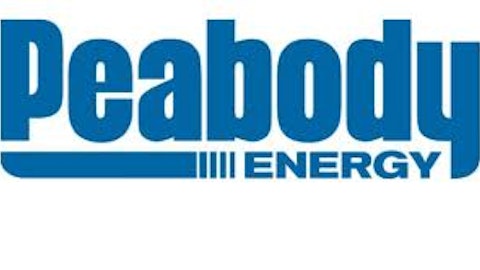Major coal mining companies haven’t performed well in recent years. Perhaps the recent increase in the price of natural gas will help rally the coal industry: Since the price of natural gas didn’t reach the low prices it did back in 2012, this should raise the demand for coal in the electricity industry. Will the recent rally in the price of natural gas help raise the revenues of leading coal mining companies in 2013?

Production remains low in 2013
According to the EIA report, total U.S production at the beginning of 2013 is much lower than the production recorded during 2012 and 2011. During February 2013, the production was 10.6% below the production in 2012 and 10.4% below the production in 2011. If the production will continue to dwindle, it is likely to pull down the revenues of leading coal companies. This decline is likely to reflect in the shares of leading coal mining companies.
Year-to-date, shares of Arch Coal Inc (NYSE:ACI) have declined by more than 21%; shares of Peabody Energy Corporation (NYSE:BTU) also tumbled by 16%.
These companies didn’t perform well in 2012. If they don’t become profitable, their stocks are likely to fall further. During 2012, Arch Coal Inc (NYSE:ACI) recorded a 3% drop in revenues compared to 2011. Peabody Energy Corporation (NYSE:BTU) had a 2.3% rise in revenues. For Arch Coal Inc (NYSE:ACI), the decline in revenues was mainly due to the 11.4% drop in tons sold. For Peabody Energy Corporation (NYSE:BTU) the rise in revenuers was because of 6.5% gain in price of coal sold in the U.S and came despite a 0.4% drop in tons sold.
Arch Coal Inc (NYSE:ACI)’s operating margin fell from an 8% gain in 2011 to a 17% loss in 2012. One of the reasons for the sharp drop in profitability was related to one-time provisions: $346 million for goodwill provision and $523 million costs related to closed operations of Arch Coal’s Appalachia mines. After adjusting for these provisions the company’s profit margin rises to 6% in 2012, which is still lower than the profit margin in 2011.
Peabody Energy Corporation (NYSE:BTU) also had one-time provisions that pulled down the company’s profit margin in 2012. After controlling for these one-time provisions related to asset impairment and mine closure costs, the company’s profit margin rises from 2% to 15%. Alas, this profit margin is still lower than 2011.
At least both of these companies offer a reasonable dividend, coming out to a 1.6% annual yield for Peabody and 2.2% for Arch Coal.
Not all coal companies are struggling: Shares of Natural Resource Partners LP (NYSE:NRP) have spiked by over 22% since the beginning of the year. Its high dividend yield the of over 9.7% is one of the main benefits to owning this stock. Keep in mind, however, this company isn’t a coal producer. It owns coal, aggregate and oil and gas reserves in the U.S. It leases its properties in exchange for royalty payments. This arrangement reduces the company’s risk related to coal mining and thus enables it to reach higher profit margins. In 2012 the company’s operating profitability reached 70%.
Let’s examine what is up ahead for the coal industry and its relation to natural gas.
Natural gas prices rising
The relation between natural gas and coal is very straightforward: As the price of natural gas rises, the price of coal follows. Moreover, during 2012 and 2013 the linear correlation between changes in coal and natural gas prices (average monthly prices) was strong and positive at 0.35. I think the relation between natural gas and coal is such that the natural gas market affects the coal market, because natural gas isn’t only used for electricity.
The electricity industry accounts for 39% of the natural gas used in the U.S for consumption in 2012; 30% for the industrial sector; and 30% for the residential/commercial sectors. These two last sectors are affected by the weather, because they include usage of natural gas for heating purposes. So the price of natural gas is affected by the fluctuations in demand in industrial, electric and residential/commercial sectors. On the other hand, nearly 90% of coal is used for generating electricity at power plants. So coal, unlike natural gas, is less affected by other sectors. This means that natural gas is plausibly leading the way in the relationship between coal and natural gas.
The recent rally of natural gas prices is likely to curb the demand for natural gas in the electricity sector. This, in turn, is likely to pull up the demand for coal, which will pressure up the price of coal. The chart below shows the developments of coal and natural gas prices during 2012 and 2013.

The rise in natural gas prices during the first few months of 2013 is likely to raise the demand for coal in the electricity industry. If the demand for coal rises, if production changes course, if the price of natural gas continues to rise, then the coal industry will recover and coal mining companies will rally.
The article Will Coal Make a Comeback in 2013? originally appeared on Fool.com and is written by Lior Cohen.
Copyright © 1995 – 2013 The Motley Fool, LLC. All rights reserved. The Motley Fool has a disclosure policy.





